“It is a hobby of mine to have an exact knowledge of London.”
Sherlock Holmes, ‘The Red-Headed League‘
Unlike the world’s most famous consulting detective, my knowledge of London is far from exact. There are parts of London I know very well, and other parts I don’t know at all. Some of my knowledge is bang up-to-date; the rest is historic and reliant on memories of places that have moved on and changed without me. Because that’s the thing about London – it just will not stay still.
I like to think the London knowledge I do have is pretty decent though. It’s definitely surprising, anyway. While I was growing up in Gateshead, London felt so far away it may as well have been a different planet. I didn’t know anyone who went to London much, if at all. Grand days out in our family were to Edinburgh, or York – relatively quick and affordable day trips to beautiful cities. And while everyone was familiar with the tired old talk about it being ‘grim up North’, there was plenty of inverse snobbery about life ‘down South’. London, I had been assured, was just an expensive, dirty, tourist-filled hellscape where I would definitely be robbed immediately on arrival, but also have seen the Queen by teatime (which, it turned out, isn’t entirely true).
This meant that, for many years, my ideas about London came from movies, television and books. The London of my imagination was a weird mash-up of Mary Poppins, Eastenders, Sherlock Holmes, red buses, black cabs and the Royal Family. I certainly never had any ideas about living or working there, because that felt about as likely as moving to the moon.
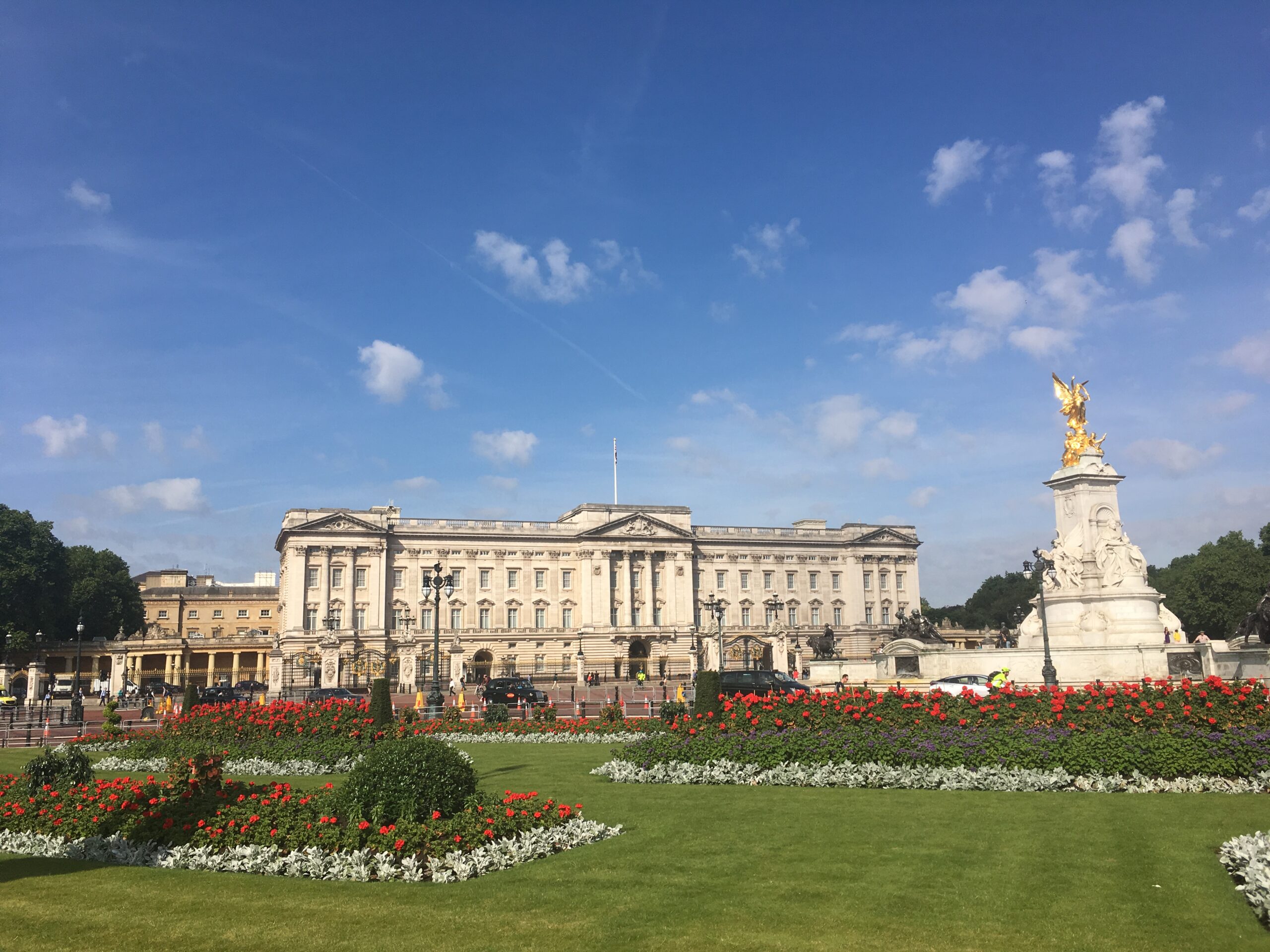
But life will often take you in strange, unexpected directions. After the Man of Kent and I left university, we both got jobs in the capital. Suddenly, London was less the stuff of imagination, and more the hard reality of getting up at the crack of dawn to commute in all weathers to an office.
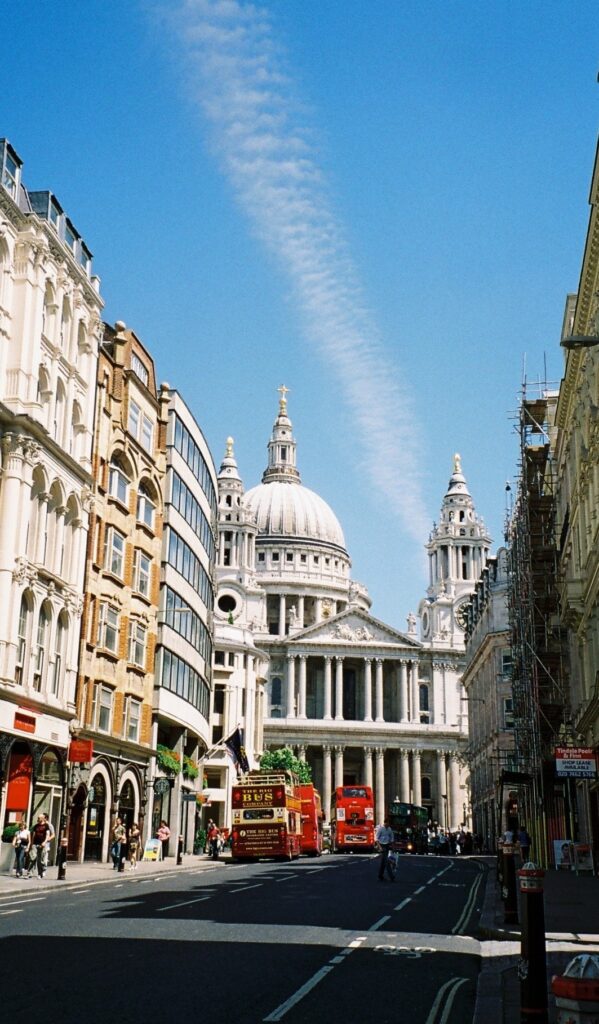
Ever since, London is where I’ve worked, lived, and met many great friends. I’ve been a City girl working in Smithfield surrounded by butchers, bankers and hipster designers. I’ve worked in the legal heart of the Temple, where the sandwich shop queues are formed entirely of solicitors and barristers’ clerks, and where I walked past St Paul’s Cathedral and the Royal Courts of Justice every day. In Westminster I worked in a dry, grey world of civil servants and politicians, and was constantly stopped on my way to work by tourists wanting directions to Buckingham Palace. In Piccadilly, I had a desk with a view of St James’s Park, and I once saw Queen Elizabeth II drive past in a horse-drawn carriage (before teatime). Most lately, I’ve been in Bloomsbury, former home of many literary greats and current home to masses of students at the many universities there.
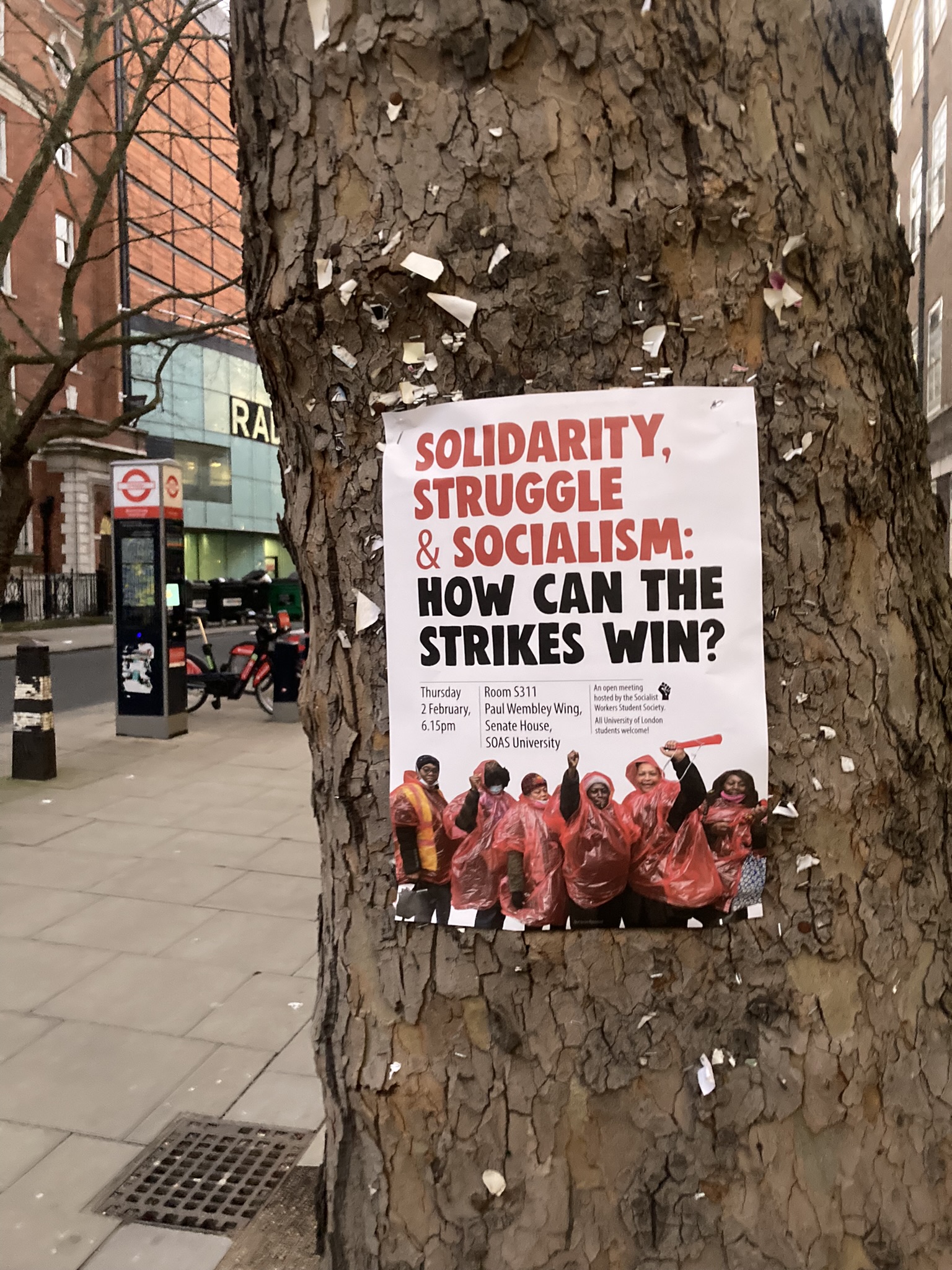
I’ve come to be very fond of London after all these years. We’ve got to know each other, and I’ve replaced all those preconceptions I had in my younger days. Yes, London can be dirty, noisy, messy, scary, busy, depressing and hard, but it can also be down-to-earth, beautiful, astonishing, uplifting and friendly. It’s everything you’ve come to expect from the tourist posters and nothing like it at the same time. I feel like a Londoner by association now, and I’m quite content with that.
I go to London less since the pandemic, but – unlike when I was in Gateshead – it’s an easy day trip as Medway is only around an hour away by train.
It can be hard to know what to do and see in London. There’s so much to do, what’s on is constantly changing, and the place is just so flipping big! So whenever I go there for fun, I’ll write about what I did. As I said at the start though, London never stays still, so do check opening times, prices etc of anything mentioned here yourself before you go!
Fantasy: Realms of Imagination at the British Library
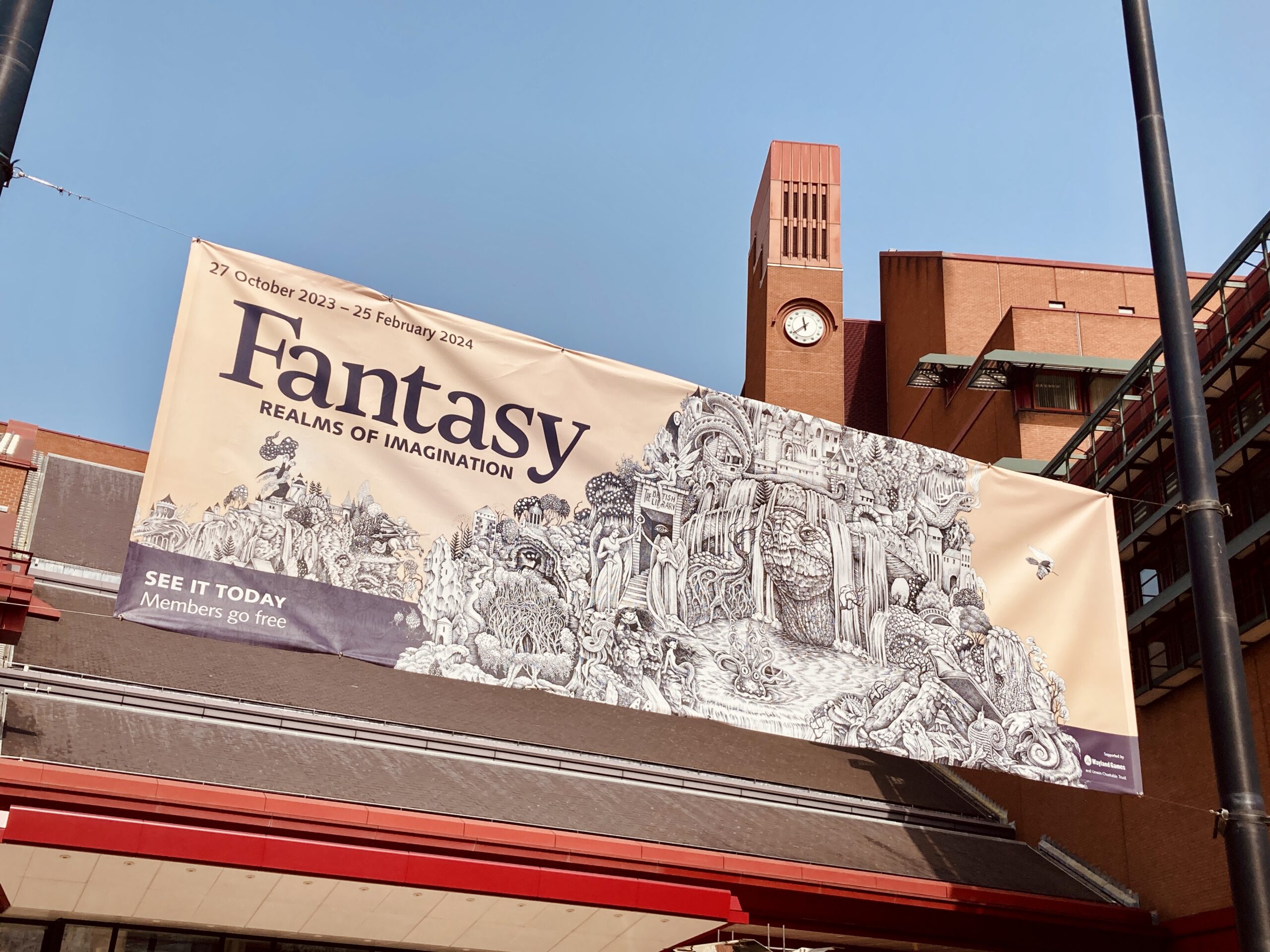
In November, the Man of Kent and I ventured to London for a day of high culture. First stop, the Fantasy: Realms of Imagination exhibition at the British Library (on until 25 February 2024).
(Actually, the first stop was Notes on Pancras Square to caffeinate the Man of Kent, who runs on coffee and had only had one cup before leaving the house. It does very nice coffee, if you’re ever in the area).
The Fantasy exhibition is a tour through the evolution of the genre, from its earliest days through to modern literature, films and video games. Unsurprisingly, most of the display is devoted to books, with original works by Alan Garner, Jeannette Ng, Charlotte Brontë, Neil Gaiman, Mervyn Peake and others on view. It covers a broad spectrum of fantasy, from fairytales to the weird and macabre, with the exhibition divided into four sections.
I’m a seasoned visitor of literary exhibitions and I have seen some great ones at the British Library over the years. This one was enjoyable. It had original manuscripts from many favourite fantasy writers, a good selection of international works, and included TV and movie icons such as Buffy the Vampire Slayer.
However, it also felt a bit…sedate. With ‘Fantasy’ as its subject, an exhibition could really go to town, taking inspiration from the wacky, ethereal, magical worlds of the genre to do something creative and exciting with the displays. I would have loved to have seen the vast high walls of the exhibition rooms used more, and the space made brighter and lighter. More sound or background noise would have been welcome too, maybe even a little bit of interactivity. Everything was on display in glass cases (understandable) but this meant an inevitable huddling of people trying to read the same small information cards. The information provided about each item was too sparse for me, and the whole exhibition felt like it lacked enthusiasm for its own subject matter. It was enjoyable but underwhelming. For the pricey entrance fee, I wanted more.
Cake + books = happiness
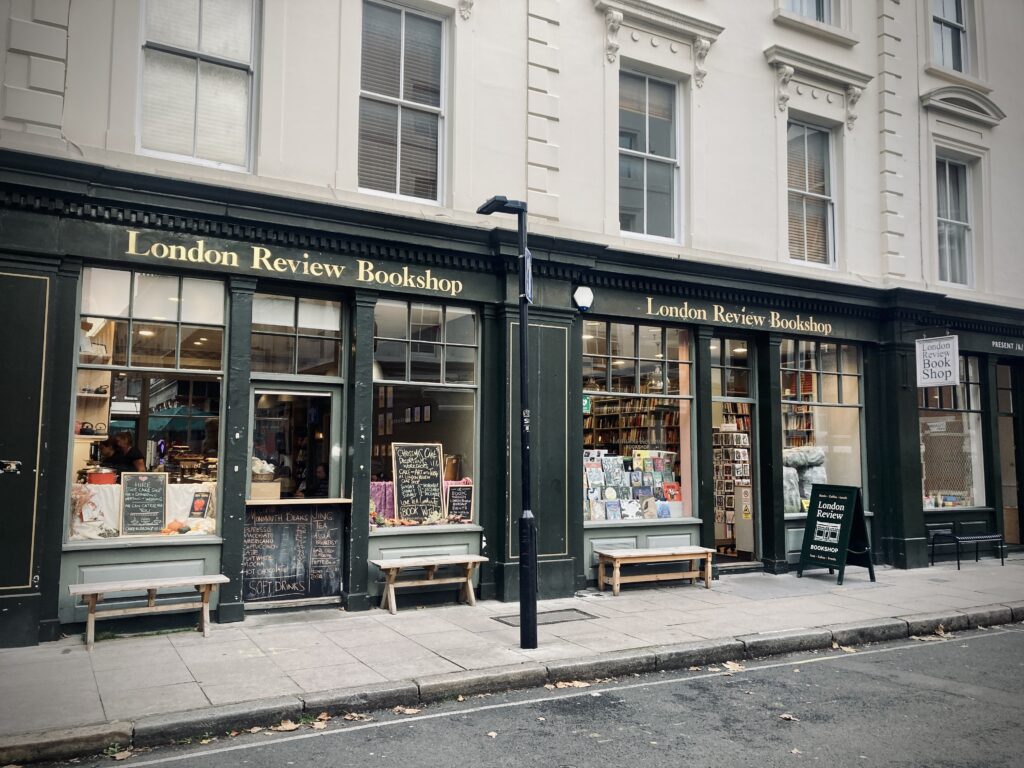
Exhibitions should always be followed by cake, and the London Review Bookshop does some of the best cakes in the city. It’s tucked away on Bury Place, opposite the British Museum.
The Man of Kent has known for ages that I’m a big fan of this place, but it was the first time he’d actually been there. It was not what he expected. Over lunch, he told me that he thought it would be wood-panelled and quiet, full of stuffy highbrow types discussing literature over tea in hushed, reverent tones. I’m not sure how he came to the impression that I was regularly visiting the booky equivalent of the Reform Club, but this cake shop is nothing like that at all. It’s a bright, welcoming place where scrumptious cakes are piled up on the counter and the daily specials are chalked on the walls. It sounds like chatter and the clinking of teacups and scraping of forks as customers hoover up the last crumbs of cake on their plates. Everyone’s always a bit squeezed in because it’s tiny (some brave souls were sitting outside in the courtyard despite the chilly temperatures while we were there) but the cakes and top-notch tea are worth it.
Welcome, book lover
Straight from one bookshop to another. Next up, a visit to Foyles on Charing Cross Road.
I first went to the current Foyles one day after work. It had been a bad day and I was feeling fed up. Foyles had just moved from a smaller shop down the road. I liked the old shop and was sceptical that bigger would mean better. Part of me thought a trip to the new shop would cheer me up. The other (fed up) part was thinking, ‘Well, I’m already feeling grumpy, may as well find out now if I don’t like the new version.’
Well, that day, I understood the true meaning of retail therapy. I walked in and the first thing I saw were words stencilled in big letters on the wall: ‘Welcome book lover, you are among friends.’ A huge, welcoming, heart-filling sign. Like a bear hug in word form as soon as you walk through the door. And my goodness, the shop! It was – is – massive – four whole floors of lovely, lovely books. It was bigger, better and beautiful. I walked around it in open-mouthed wonder, admiring every part. I may have come out actually glowing. It was glorious that day and it still is. Well worth a visit.
Feeling Afraid As If Something Terrible Is Going to Happen
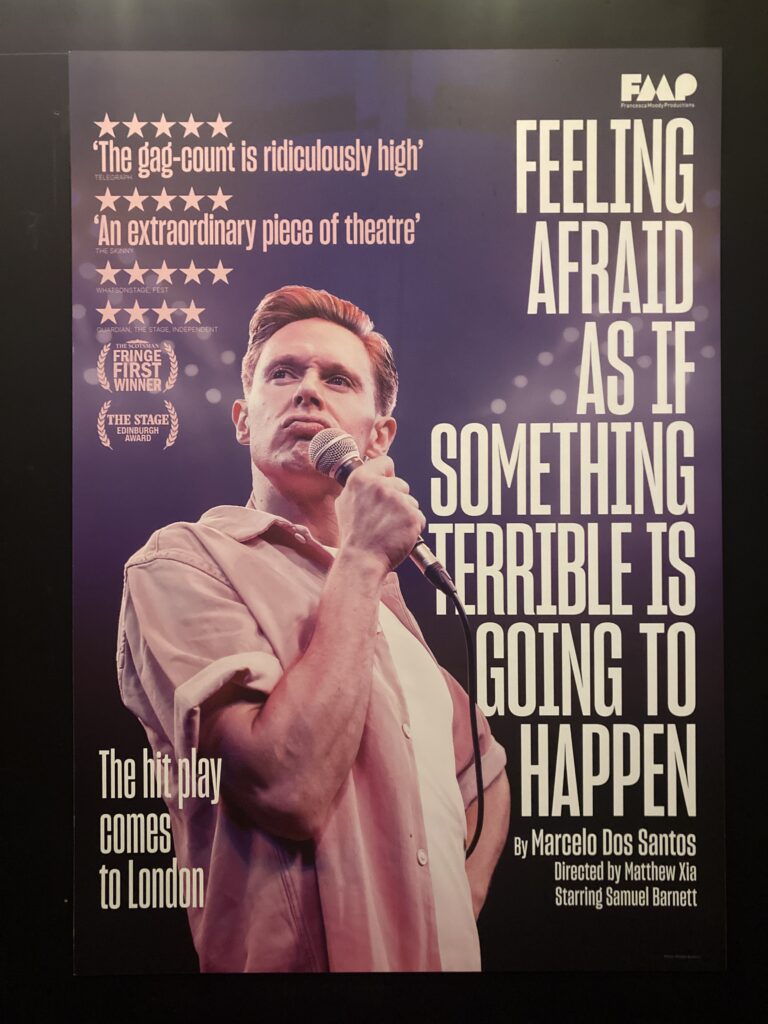
The evening’s entertainment was Feeling Afraid As If Something Terrible is Going to Happen at the Bush Theatre in Shepherd’s Bush.
I really like the Bush Theatre. It focuses on plays by new writers and its library bar is a cosy place to enjoy a pre-show drink and peruse some unusual theatrical books while doing so. It’s also reasonably priced with tickets for most shows starting at around £25.

Feeling Afraid As If Something Terrible Is Going To Happen won awards at this year’s Edinburgh Fringe and this was its first London run. It’s a one-hour long, one-man show about a professional comedian who finally meets his perfect man but ends up completely sabotaging the relationship. It’s dark and hilarious. Samuel Barnett expertly reels in the audience. You’re gripped by his performance, hanging on every word, yet dreading what he’s going to do next – literally afraid that something terrible is going to happen. It closed on 23 December but if you get the chance to see it at the Bush or elsewhere in another run, I’d highly recommend it.
Trip two
It was a frosty December morning when we left Gillingham for another day in the metrop. First stop on arrival: Ole & Steen at Sir Simon Milton Square to caffeinate the Man of Kent, who again had only had one cup of coffee before leaving the house. We fuelled up with hot drinks and Scandi bakes – chocolate truffle log for him, crumble mince pie for me; delightful.
Beauty is in the eye of the visitor
Next stop: The Wellcome Collection on Euston Road, a free museum and library about human health and experience. There are two free temporary exhibitions on at the moment – The Cult of Beauty (on until 28 April 2024) and Genetic Automata (on until 11 February 2024), as well as the permanent Being Human exhibition. We’d never been to the Wellcome Collection before and had thought we’d start with the Cult of Beauty and work our way through. What we hadn’t anticipated was how much there was to see in just one of the collections! We never made it to the other two exhibitions, but that just means we’ve got a good reason to visit again.

(Almost) all of my dead mother’s beautiful things, 2023, Narcissister. Gallery Photo: Benjamin Gilbert. Source: Commissioned by Wellcome Collection. Attribution-NonCommercial 4.0 International (CC BY-NC 4.0).
The Cult of Beauty takes you on a walk through time, looking at ideas of beauty across different eras and cultures. The displays include artworks, photographs, and a huge selection of bizarre beauty-related inventions. It also looks critically at the ‘othering’ of different cultures and the beauty industry’s attempts to make products and magazines ‘inclusive’. Fascinating and shocking. Go see it.
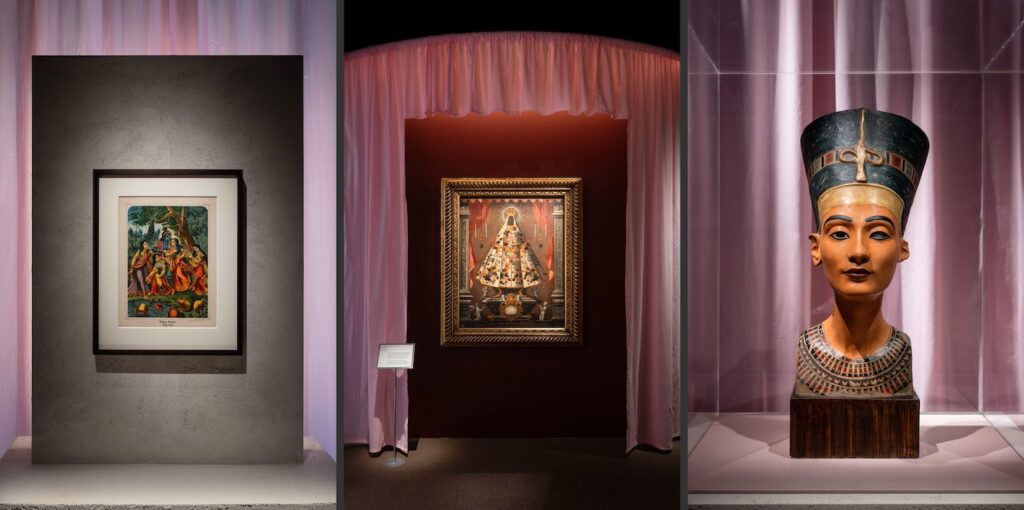
Left to right: Krishna with Radha and three gopis, 19th century, unknown maker, Wellcome Collection. The Virgin of Guadalupe, 1745, unknown maker, Wellcome Collection. Bust of Nefertiti, plaster copy 1928 Clarke and Davies, Wellcome Collection/Science Museum Group. Gallery Photo: Benjamin Gilbert. Source: Wellcome Collection. Attribution-NonCommercial 4.0 International (CC BY-NC 4.0).
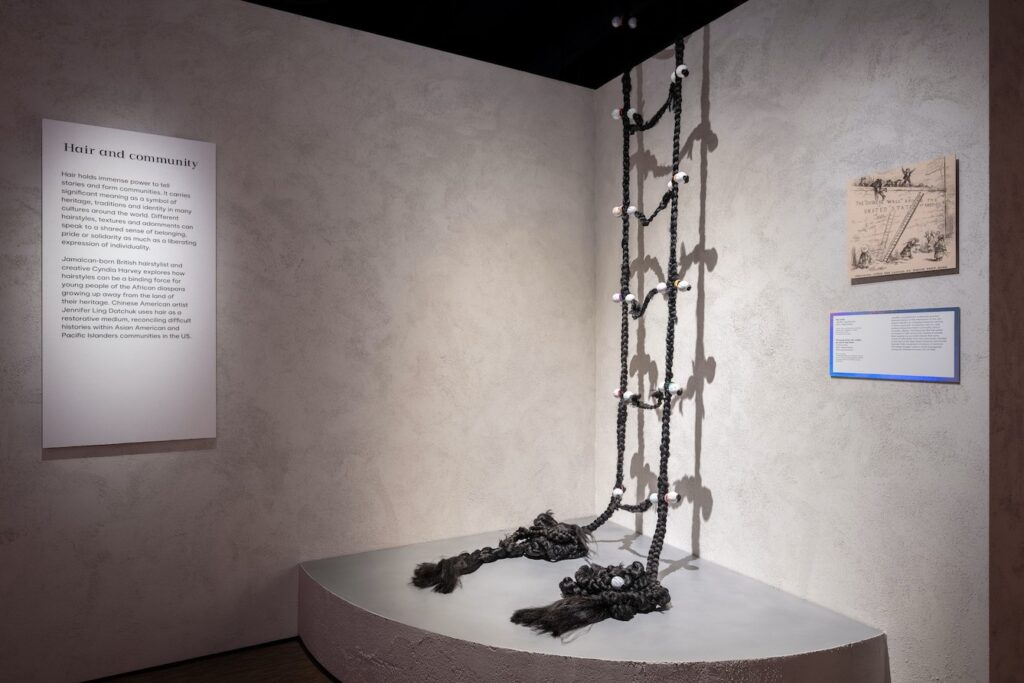
We Climb, 2021, Jennifer Ling Datchuk. Gallery Photo: Benjamin Gilbert. Source: Reproduced with permission of Jennifer Ling Datchuk. Attribution-NonCommercial 4.0 International (CC BY-NC 4.0).
Holmes, meet Scrooge: ‘A Sherlock Carol’ at the Marylebone Theatre

‘A Sherlock Carol’ is a mash-up of ‘A Christmas Carol’ and the Sherlock Holmes canon into a festive murder mystery. I’d missed this when it was on in London last year, so I was delighted to see it get another run.
Now. As a general rule, I do not like adaptations of beloved books; they usually disappoint and irritate me, often at the same time. The Man of Kent has had to sit through several of my rants about TV, film and stage adaptations of various books. I think he can do some of them by heart now. But, I do love murder mysteries, Sherlock Holmes and Dickens, and this sounded intriguing. I went in fully expecting to either love it or hate it.
Reader, I rather loved this.
Starting off by clarifying that ‘Moriarty was dead to begin with’, the story takes place on Christmas Eve, some years after the events of ‘A Christmas Carol’. Holmes, haunted and embittered by what happened with Moriarty at the Reichenbach Falls and on the verge of giving up his detecting career, meets Tiny Tim – now grown up and a doctor in charge of a local hospital. Tiny Tim (now Dr Cratchit) brings startling news – Ebeneezer Scrooge has been found dead, locked in his study. Whodunnit? A reluctant Holmes takes on the case, regaining his love for sleuthing in the process.
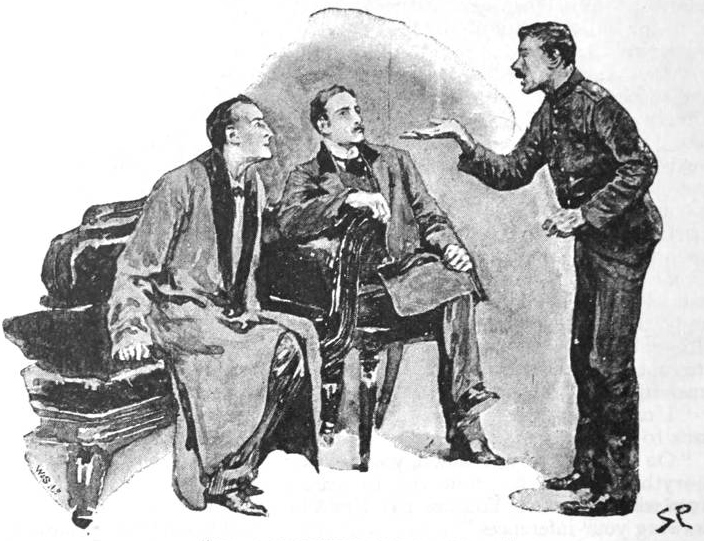
The plot cleverly combines Dickens’ ‘A Christmas Carol’ and Conan Doyle’s ‘The Adventure of the Blue Carbuncle’, weaving both stories together seamlessly. It also adds some witty extra touches; my favourite being (minor spoiler coming up) that the young lad who Scrooge asked to fetch him the goose from the shop window at the end of ‘A Christmas Carol’ turns out to have been a young Dr Watson.
Sticklers for faithfulness like me will be pleased that much of the script is taken from the original stories. Ben Caplan deftly combines the personalities of Scrooge and Holmes into a grouchy, troubled protagonist, whose personality starts off as Scrooge with a hint of Holmes but eventually transforms into the familiar detective we all know and love. Devesh Kishore as Dr Cratchit is a likable foil to Caplan’s Holmes. The rest of the cast play several parts with Jessica Hern as Lestrade and Wiggins, and Rosie Armstrong as the Countess of Morcar and Irene Adler. The staging and lighting conjure gloomy, foggy Victorian London perfectly. The theatre itself is a lovely venue, with not a bad seat in the house.
‘A Sherlock Carol’ is on at the Marylebone Theatre until 7 January 2024. Do go and see it if you get a chance this year or next – it’s a cosy, festive treat of a show and deserves to run every Christmas.
Onto next year!
Somehow, it’s nearly 2024. I’m looking forward to several things in London next year already, including Guys and Dolls at the Bridge Theatre and A Chorus Line at Sadler’s Wells. Who knows, perhaps 2024 will finally be the year that I achieve my ambition to climb the O2? I’ll keep you posted on that.
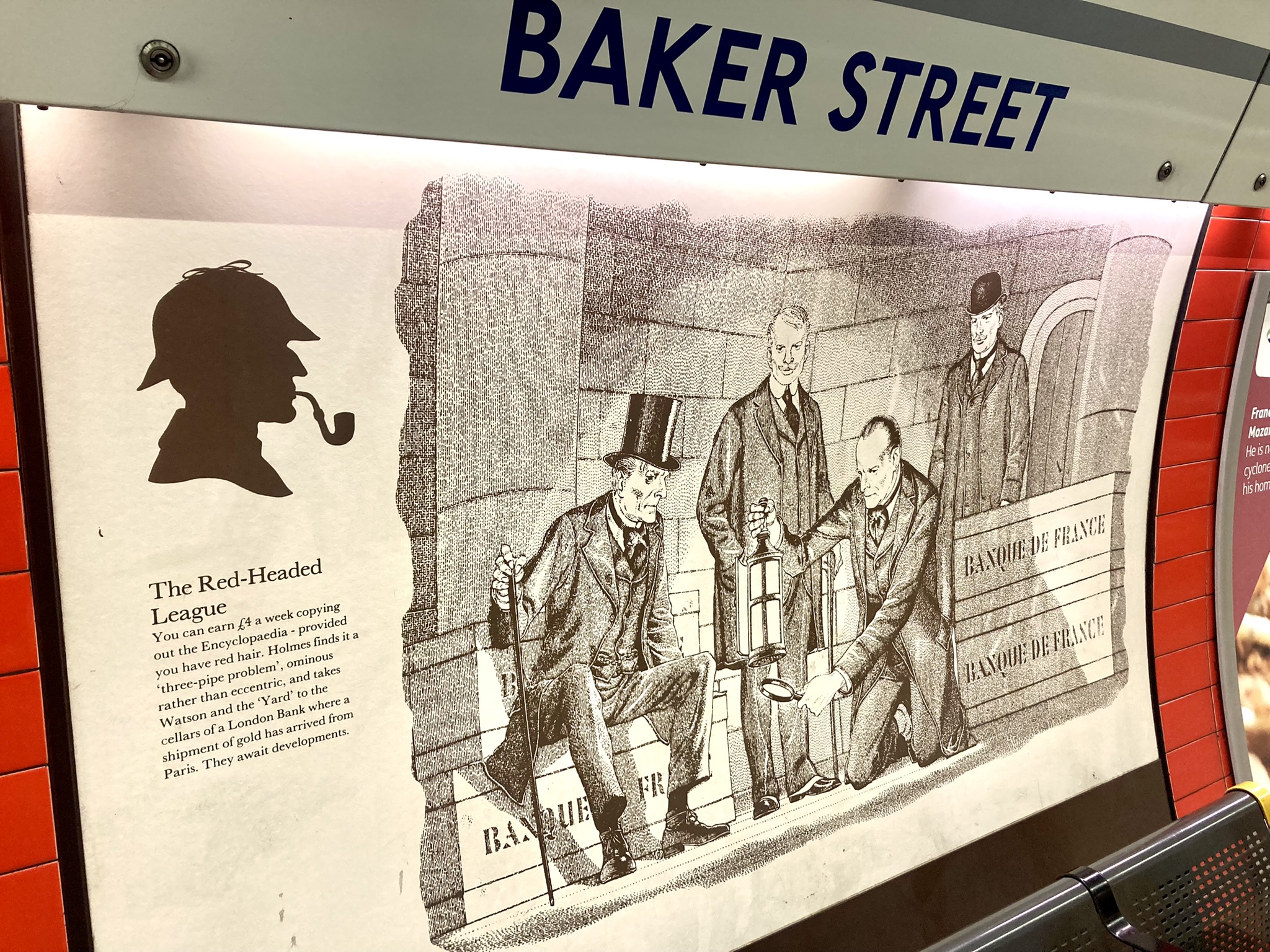
Leave a Reply